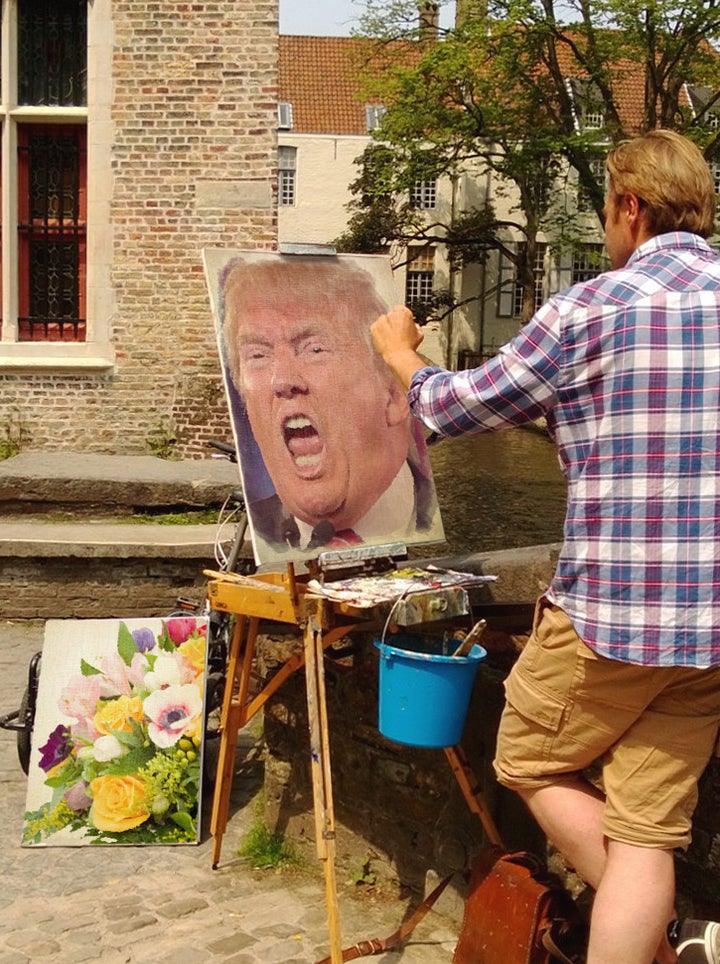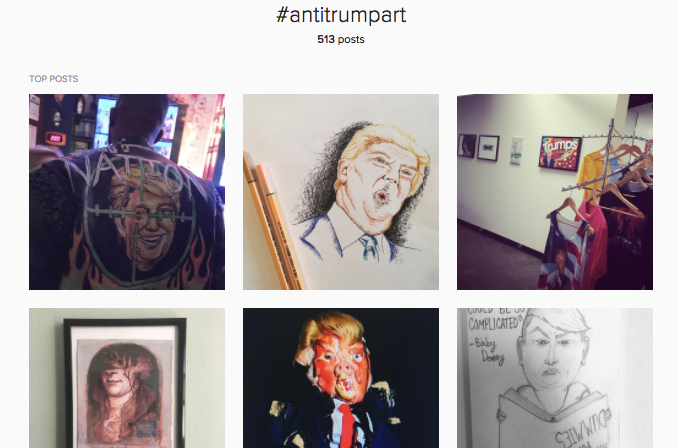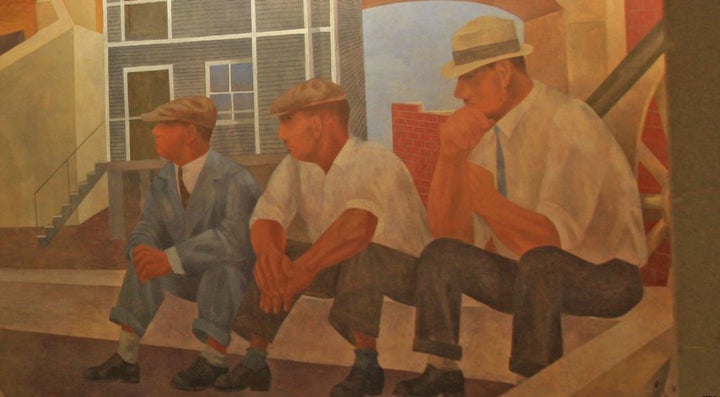
“But among the greatest enemies of the arts are the enemies that lie within, in the arts community’s seemingly liberal demand that all discourse be reasonable, disciplined, purposeful, useful.” - Jed Perl
Jordan Wolfson, a Yale-educated painter who lives and works in Louisville, Colorado, recently left a comment for me on my Facebook page. He was wondering what I thought about the situation of painting “in a time of political and spiritual repression,” which he fears is “just warming up.” I share Jordan’s concerns, but initially didn’t know how to respond to his query. If anything, I’m inclined to offer more of a caution than an answer: I’m worried that artists of our era may be too quick to respond to disturbing political developments by politicizing their art.
Since the election of Donald Trump, the idea that right-minded artists should politicize their art as a form of protest and resistance, has been widely circulated. For example, in a recent HuffingtonPost blog, “What It Means to Be An Artist in the Time of Trump,” performance artist Emma Sulkowicz offered this exhortation:
“Too many people abstract the meaning from their work. More than ever, artists who have the privilege of any audience must speak clearly about the issues that matter most.”
Sulkowicz’ point of view, which I think is both well-intentioned and mis-guided, makes me think of a Facebook comment that I read just days after the election—sorry, but I forget who wrote it—that read: “Let’s all be ready for four years of really bad political art.” I laughed when I read it, as I think that is a pretty good prediction. A quick scan of some of the images posted with the hashtag #antitrumpart on Instagram may also make you concerned about the tsunami of well-intentioned but lame art America’s political angst has just begun to generate. Yes, Trump has been a gift to satirists, but there is a limit to what satire and sarcasm can say.

Top posts with the hashtag #antitrumpart
It’s quite understandable that one might be inclined to like a work of art that carries a political message you are sympathetic to. The problem is, that ideological sympathy can lead to giving a “free pass” to shoddily conceived or shrill works of art. When the message of a work of art carries more weight than its other aspects—it’s formal qualities, for example—there is a good chance that our standards will lapse. And when the subject matter of art becomes politicized, it is likely that what might now seem like vital subject matter now will seem trivial when the context of the moment falls away.
A case in point: just how much of the politically-motivated Social Realism of the 1920s and 1930s still moves you today? Other than Diego Rivera’s Detroit murals, I come up fairly empty in trying to respond. When Arshile Gorky called Social Realism as “Poor art for poor people,” he had a point to make. The largely apolitical art movement that we associate Gorky with, Abstract Expressionism, proved to be much more enduring.

Unemployment by Ben Shahn (detail from a mural)
I think that the best art has an air of authenticity about it. I see visual artists—the group that I write about—as mediums who bring us glimpses of the world through the filter of the self. Each individual self is infinitely complex—shaped by nature and nurture, by experience and perception—and when individual artists feel obligated to respond to a collective set of demands there is a kind of flattening that takes place. To put it another way, when art becomes a job, utility can sideline authenticity: the result will most often be dull, didactic art.
On the other hand, political outrage—when channeled through the sensibilities of strong individuals—can certainly generate great art. The power of unfettered individual expression—the natural opponent of authoritarianism—is what makes Picasso’s Guernica so memorable. Picasso’s personal antipathy to Francisco Franco and to the terrifying form of modern war he sponsored is what gives Guernica its authenticity, its sense of outrage. Of course, Guernica didn’t stop Hitler, and any artist who engages in making political art needs to be realistic about what art can and can’t accomplish. Writer Kurt Vonnegut has a few choice words to say about this in relation to the Viet Nam era:
“During the Vietnam War, which lasted longer than any war we’ve ever been in—and which we lost— every respectable artist in this country was against the war. It was like a laser beam. We were all aimed in the same direction. The power of this weapon turns out to be that of a custard pie dropped from a stepladder six feet high.”
Yes, dissent and protest helped bring an end to the disastrous Viet Nam war, but the political art of that era has fallen through the cracks of history. On the other hand, some of the best apolitical art made during that same time period—for example, Richard Diebenkorn’s early Ocean Park paintings—is looking better and better... which brings me to something important.
Up to this point I have been avoiding one of the words in Jordan Wolfson’s original comment: he asked me about painting “in a time of political and spiritual repression.” I honestly think that one of the most important and vital things any artist can do during a time of political crisis to deepen the spiritual intentions of his/her art. Artists can take refuge in their art, which they in turn can offer to all of us as a source of consolation.

Monet in his studio.
During the horrific political events of World War I, the artist Claude Monet was working in his studio at Giverny, where he could sometimes hear the explosions of shells not far away. He was creating his magnificent cycle of Nymphéas (water lilies) that are now housed in L’Orangerie in Paris. “Most of my family has left,” he wrote to a friend during this period. “A mad panic has seized all this area. As for me, I’ll stay here all the same, in the midst of my canvases, in front of my life’s work.” Monet, who knew what he was best at, did what he was meant to do, which was to take his lifetime’s work to it’s ultimate conclusion. By doing so, he gave us masterpieces that still resonate healing power.
So to Jordan—and anyone else who is reading this—if you feel so strongly about politics right now and feel that you need to make your art a vehicle for your politics, I can respect that and North America could use a Guernica.(Standing Rock, anyone?). On the other hand, if your heart isn’t in it, don’t feel the need to politicize what you do. Art has many faces, and there are spiritual and aesthetic journeys that need to be taken regardless of political circumstances.
I believe that people have a tendency to become what they hate, and if someone tells you “You art must be political because of the times you live in” there is something disturbingly authoritarian about that insistence. And If I didn’t entirely respond to or answer Jordan’s post—and I am not sure that I have—it is perhaps because I believe that the most important questions are ones we all ultimately need to answer for ourselves.
